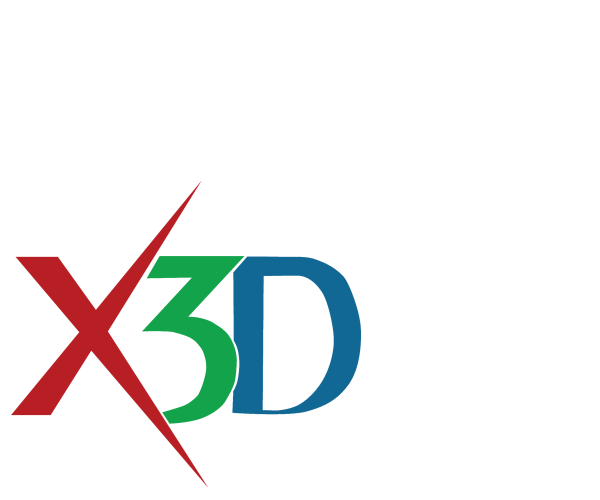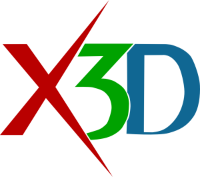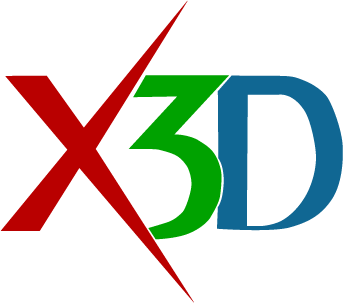
Web3D Consortium’s Monthly News Brief
BOX OF X3D – X3D Version 4
October 2020 Highlights:
X3D Version 4 – Integrating X3D into HTML5. Public draft release.
Web3D 2020 Conference registration is open.
Web3D Consortium continues its mission to promote open interactive 3D through advancements to draft ISO standard X3D4. Our community is implementing business-critical 3D applications, adopting many related 3D technologies and trends.
Every month we curate multiple topics to help provide clarity around the future of X3D graphics and it’s ecosystem. We begin with X3D Version 4.0.
The ability to access 3D graphics hardware from within the Web browser is a true game changer. As Web browsers have improved the speed of JavaScript engines, they have provided everyone access to graphics hardware through WebGL. The result is a performant mix of declarative content, procedural graphics, and event-based logic. As new technologies and features stabilize and standards evolve, 3D graphics developers have the archival stability of well-tested long-lasting specifications to build upon.
Web3D Consortium’s X3D Version 4.0 is leveraging many of the lessons learned from the W3C Declarative 3D Community and open source plugin-free WebGL, to integrate X3D into HTML5. Open source implementation of X3DOM and X_ITE, both JavaScript X3D implementations have demonstrated integration with WebGL, glTF, HTML5 and the DOM.
A high-level view of these leading open formats and how and why they should be used together is detailed in the blog, Integrating X3D and glTF.
X3D4 Feature Set:
1. HTML5 Integration with Javascript APIs: You can share your 3D models anywhere with anyone by saving them as X3D and then embedding them in an HTML page using either of our open-source implementations, X3DOM and X_ITE.
2. X3D 4.0 brings forward the multiple file formats and programming languages, X3D Unified Object Model (X3DUOM) which enables authors to create, validate, and manipulate X3D content in a large number of file encodings (XML, JSON, Binary, ClassicVRML) and programming-language bindings (JavaScript, Java, C#, C++, C, Python).
3. glTF Support: X3D 4.0 models can compose scenes with glTF 2.0 assets. Inlining glTF and mapping to the underlying technical structure of X3D. X3D is a higher level scene graph that describes many geometry types, lights, interactions, animations, etc. X3D provides a broader value proposition than glTF, including Metadata and Security. X3D provides a robust presentation layer when combining 3D models, geospatial and imagery into one system.
4. Physically Based Rendering (PBR) and materials upgrade: X3D4 includes a new material node (PhysicalMaterial) to describe the surface using the “material-roughness” physical lighting model. X3D PBR supports: Normal maps to all material nodes, a dedicated UnlitMaterial node, support for ambient occlusion textures, and many enhancements to the Phong Material (to customize all the parameters through textures). Authors can choose classic VRML Phong rendering, advanced PBR or both together for models and composed scenes.
5. Multiple Implementations: X3DOM and X_ITE continue releases and updates, steadily tracking each X3D 4.0 improvement. Additional standalone implementations include Castle Game Engine, FreeWRL and other tools.
6. Included in version 4.0 is full integration of the Web Audio API adding high-fidelity sound propagation, rendering and mixing techques together with advanced sound processing capabilities.
A second public draft was released in August 2020. The X3D Working Group and Web3D Consortium are completing the review and approval process this year and submitting for ISO-IEC ratification in December 2020.
X3D 4.0 development is the center of discussion among the Web3D Working groups and community. We encourage members to participate in these important discussions as we extend X3D to make native authoring and use of X3D models fully integrated with HTML5.
Join the Consortium and have access to Industry-wide perspectives to help make informed strategic decisions and build your next open 3D application! There are many benefits that come with Web3D membership. Our marketing website, WebX3D.org and our series of educational Webinars on X3D technology helps you get started with X3D. Learn more about our Working Groups and other initiative in our Newsletter.
X3D is your hub for publishing 3D data. A higher-level language to compose several 3D assets into a meaningful 3D Web applications for publishing 3D with interactivity. Check out Web3D member use cases and join this innovative 3D graphics community.
Web3D Consortium is a nonprofit organization that develops and maintains the X3D, VRML, and HAnim international standards. These are 3D graphics file formats and run-time specifications for the delivery and integration of interactive 3D data over networks. Web3D Consortium members work together to produce open, royalty-free and ISO-ratified capabilities for the Web. For more information please contact us at contact@web3d.org. Follow us on twitter @web3dconsortium
Our annual Web3D Conference ” 3D for a Hyperconnected World” will be held virtually from 9-13 November 2020. Free registration is open.
Follow us on twitter and get updates at Web3D News and Events
Web3D Webinars | Web3D Standards | X3D Examples | Learn X3D | Newsletter







